Like many other special events in the time of the coronavirus pandemic, the 2021 Greater Los Angeles Master of Fine Arts annual exhibition had to be reimagined to fit the time.
Since 2005, the Fine Arts Roundtable at Long Beach State, an organization for Master of Fine Arts students, has hosted the annual GLAMFA exhibition.
It was a weeklong event, creating space for CSULB MFA students and MFA students in the Los Angeles area to submit their artwork and have it featured in the CSULB School of Art galleries, where the community and peers could go view it.
For 2021, members of the Fine Arts Roundtable were determined to not only adapt, but create an opportunity for inclusivity as well, coming off the coattails of social justice and reform discussed more widely in 2020.
So, GLAMFA was not only reimagined as a virtual exhibition, it was a reimagining of the exhibition itself. The first California Master of Fine Arts exhibition debuted, open to MFA students across California, not just Los Angeles.
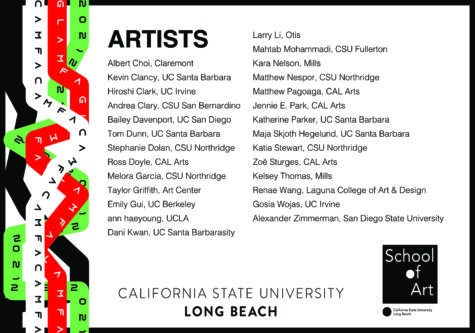
The exhibition included multidisciplinary art from students, all available to view until the end of January.
President of Fine Arts Roundtable Mirabel Wigon said that the organization began creating a virtual exhibition as soon as it was announced that distance learning would be implemented at CSULB. Members prepared for two possible shows, either an in-person or online exhibition. But as months of virtual learning continued, Amanda Quinlan, vice president, said it became clear by mid-summer the former would not be possible.
Building a virtual exhibition wasn’t the organization’s only responsibility. For CAMFA to work, the organization needed to make contact with students in Northern California.
According to Quinlan, emails were sent to contact advisors for Master of Fine Arts programs at all schools that had an MFA program.
More locally, an email did make its way to the inbox of artist Larry Li, who is currently pursuing an MFA at Otis College of Art and Design.
After learning about CAMFA, Li said it was a great opportunity to meet with artists, especially during this time, and see their practices.
Li submitted pieces from his series The Familial Archive, paintings that were based on photographs of Li’s family.
The photographs, featuring his mother, father and sister, reminded Li of his family’s migration to America from China. His sister was born in China, but didn’t migrate to America until she was 2 years old.

The image layed on top of the paintings is a vintage Chinese calendar, a “nostalgic symbol” that Li said he was always drawn to.
“I think at the time, the whole world was hyper aware of the time we were in and the present, and looking at those photographs and collaging this calendar was a way to kind of connect these two times for me and was a way to recontextualize those memories I’ve had from those photographs,” Li said.
He said he grew up always drawing and couldn’t imagine working in any other field by the time he started college.
Li said that as an artist, he works from a space of “cultural contrast” and the experience from living in a dual political, geographical and cultural identity that he has as Chinese American. He said there is a sense of distance that he has from his family heritage and history, which he works through in his artwork.
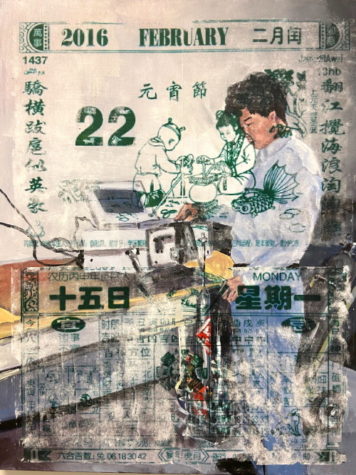
While Li said he sometimes feels his work is relatable to only a few considering that his work comes from his personal perspective, he realized these pieces touched on a universal theme of having history and culture with family, and at times, feeling distant from that.
Quinlan said CAMFA received 68 submissions. Wigon said that number was typical of previous exhibitions, although it was slightly higher than last year’s submissions.
The virtual exhibition featured about 27 artists, according to Wigon. CAMFA was curated by the Fine Arts Roundtable, the organization collaborating with the other officers and opening it up to other graduate students from the department to share their thoughts on which pieces were to be selected.
One of the artists whose work was selected is Andrea Clary, an MFA student at California State University San Bernardino.
Clary pursued ceramic art by happenstance by taking an art elective credit during hre undergraduate.
While Clary always had an interest in art like fashion, her parents steered her towards a different path. Ceramics reinforced the idea that Clary was meant to create art.
But it wasn’t until her first master’s degree at California State University Northridge that Clary began to create work with a personal message. Clary said that she began to look at fashion again and made abstract silhouettes for clothes, all the while never seeing a body like hers walk down the runaway.
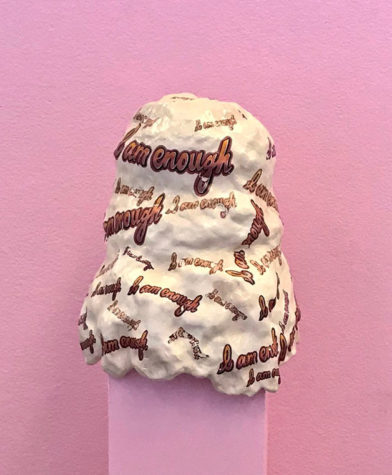
It wasn’t until she saw model Ashley Graham on the cover of Sports Illustrated in 2015 that Clary realized she could be part of the then small, but growing body positivity movement.
“I was so happy that I could go on that journey with that too, so then I finally started asking myself, ‘What would I look like if I was in these couture abstract designs that I was making with my ceramics?’” Clary said. “So then I started pulling my body into it…and I really started tapping into my insecurities.”
Stretch marks and cellulite were pressed and shaped into Clary’s ceramics, giving it the appearance of a body.
“My body is a drug and you need it” featured in CAMFA is a piece Clary is proud of. It came about after Clary took photos of herself naked. She said she hated the photos, but decided to challenge herself to take something she hated and turn it into art.

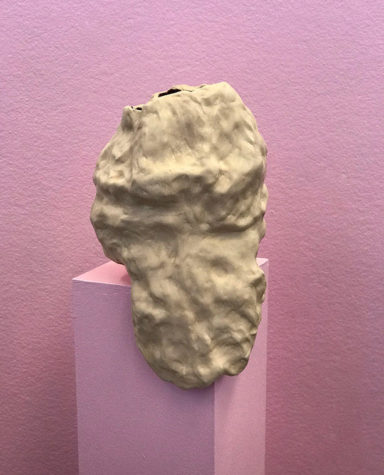
The result proved to Clary that she was on a journey to continually accept her body and put it out there for the world to see, to help viewers of her art love their bodies as well and that she and her art keep moving forward.
Another artist included was Bailey Davenport, who is a master’s student at University of California San Diego.
Davenport, who uses the pronouns they/them, said in an email that their paintings were part of a larger series depicting their hometown, St. Louis, Missouri. They originally planned to create works of landscape to represent social and economic disparities there, but moved towards portraits of people as a way to explore the region.
The piece, Saint Louis Surge, showed the college basketball team playing. Davenport said they used to attend these games in middle and high school.
“I was really interested in the idea of personal narrative and nostalgia, creating a sense for the viewer of what it was like to grow up in St. Louis,” Davenport said.
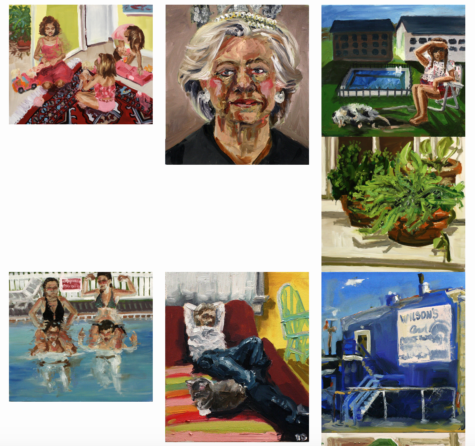
CAMFA, like for Li, became an opportunity for Wigon and Quinlan to engage with their peers that they might not have met even if the coronavirus pandemic wasn’t going on.
“I think it’s wonderful because somebody that I would never have met, we get to come together and talk about their work or interests in their projects and then start following them, and I think it’s just like a really great network and community building activity,” Wigon said.
The virtual exhibition also contained some of its other activities that normally was held in-person, including the resource room.
According to Wigon, artists previously were invited to share any books that they felt related to their work or practice. Inside the exhibition, a miniature library containing those books would be made available so that the information could be shared. That transitioned to a reading list available on their website to achieve that purpose.
Still, the virtual exhibition does not make up for the loss of what an in-person exhibition can offer, like interaction with artwork face-to-face in a gallery setting, according to Wigon.
“But the cool thing about this online exhibition is that, I think for me, it’s definitely had me rethink how we can connect and how we can share information,” Wigon said. “I feel like it’s pretty effective. We can create an archive, where someone can actually come and check this out.”
The exhibition, according to Quinlan, highlights how the arts community can preserve during this time.
“And the value that’s in that, in the workshop that we did and our reception and our panel discussion, I think one of the things that really strung all of the bits and pieces of our programming together was just the way that it highlights the value of supporting one another and being a community of art makers,” Quinlan said.

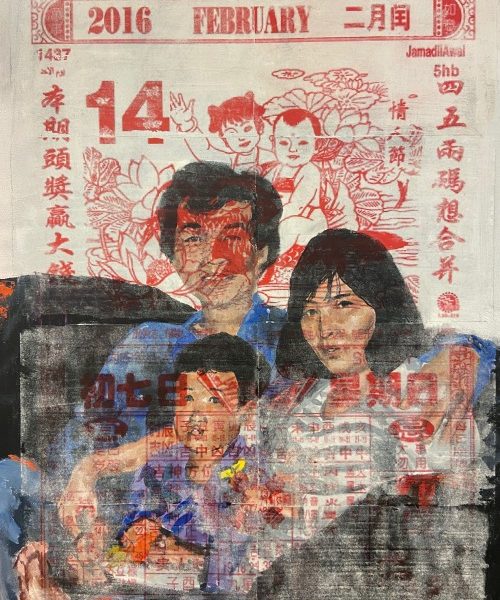
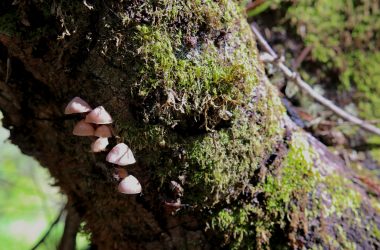
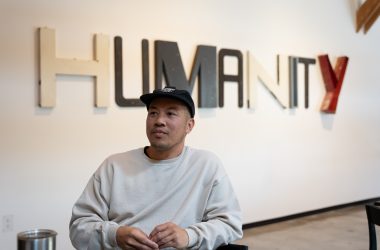
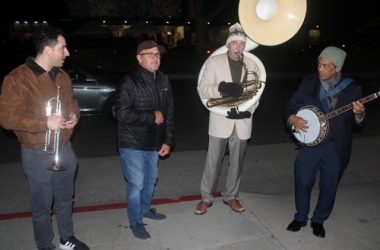
Pingback: Artists adapting to the pandemic - Daily Forty-Niner
Pingback: Artists adapting to the pandemic - Daily Forty-Niner